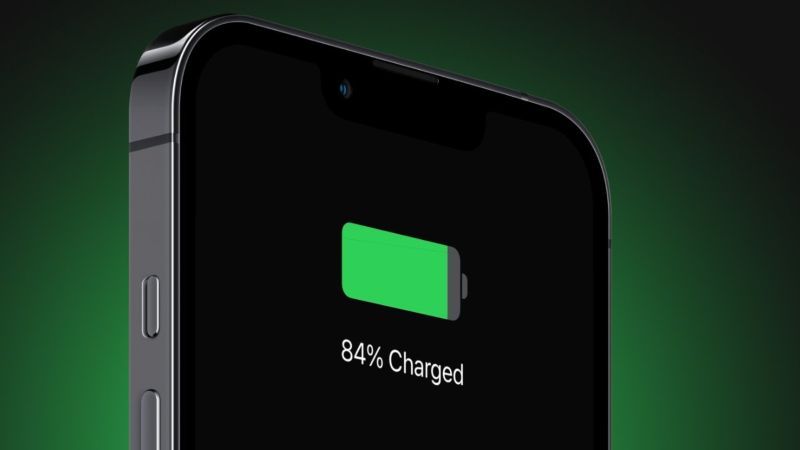

Let's explore this topic in more detail with Tiny Fishing below. As iPhone users, we all know the struggle of keeping our devices powered throughout the day. Whether you're a young professional, a tech enthusiast, or a long-time Apple fan, maximizing battery life is crucial for staying connected and productive. In this comprehensive guide, we'll delve into 15 proven tips to extend your iPhone's battery life, ensuring you get the most out of your device without constantly searching for a charging outlet.
Before we dive into the tips, it's essential to understand how iPhone batteries work. Lithium-ion batteries, which power iPhones, have a limited lifespan and gradually lose capacity over time. However, with proper care and usage habits, you can significantly slow down this degradation process and extend your battery's overall life.
Apple has made significant improvements in battery technology and power management with each new iPhone model and iOS update. Nevertheless, implementing these tips can help you maximize your device's battery performance, regardless of its age or model.
One of the most effective ways to extend your iPhone's battery life is by adjusting various settings. These tweaks can significantly reduce power consumption without compromising your user experience.
Your iPhone's display is one of the biggest battery drains. Adjusting its settings can have a substantial impact on battery life. Start by lowering your screen brightness or enabling auto-brightness. This feature automatically adjusts the screen's brightness based on ambient light, saving power in darker environments.
Next, consider reducing the auto-lock time. This setting determines how long your iPhone waits before turning off the display when inactive. Setting it to 30 seconds or 1 minute can save considerable battery life throughout the day.
Another display-related tip is to use Dark Mode, especially if you have an iPhone with an OLED display. Dark Mode can significantly reduce power consumption since OLED screens only illuminate the pixels needed to display content, meaning black pixels remain off.
Read more: Best iPhone Settings to Change Immediately
Background App Refresh allows apps to update their content in the background, even when you're not using them. While this feature can be convenient, it can also drain your battery. Go to Settings > General > Background App Refresh and turn it off for apps that don't need constant updates.
For apps that you do want to keep refreshing, consider setting them to refresh only when connected to Wi-Fi. This way, they won't use cellular data and will consume less power when you're on the go.
Beyond adjusting settings, there are several techniques you can employ to maximize your iPhone's battery life. These methods involve changing how you use your device and taking advantage of built-in features designed to conserve power.
Low Power Mode is a powerful tool for extending battery life when you're running low on power. This mode temporarily reduces or disables certain features like background app refresh, automatic downloads, and some visual effects. You can enable Low Power Mode manually in Settings > Battery or set it to turn on automatically when your battery reaches a certain percentage.
While in Low Power Mode, your iPhone will still function normally for most tasks, but you may notice slightly slower performance for more demanding applications. It's an excellent feature to use when you need to stretch your battery life until you can recharge.
Your iPhone's various connectivity features can be significant battery drains if not managed properly. When you're not using them, turn off Wi-Fi, Bluetooth, and cellular data. If you're in an area with poor cellular reception, your iPhone will work harder to maintain a connection, draining the battery faster. In such cases, consider enabling Airplane Mode temporarily.
Location services are another feature that can impact battery life. While useful for many apps, constant GPS usage can quickly deplete your battery. Go to Settings > Privacy > Location Services and adjust the settings for each app. Consider setting location access to "While Using the App" instead of "Always" for apps that don't need constant location data.
For those who want to take their battery optimization to the next level, there are more advanced techniques you can employ. These tips are particularly useful for power users who demand the most from their devices.
Push notifications can be a significant source of battery drain, especially if you receive many throughout the day. Each notification wakes up your phone's display and may trigger background processes. Review your notification settings and disable them for apps that aren't essential. For the remaining apps, consider grouping notifications or using summary notifications to reduce the frequency of alerts.
Additionally, you can use the "Deliver Quietly" option for less critical notifications. This setting prevents notifications from lighting up your screen or making a sound, further conserving battery life.
Read more: 10 iPhone Hacks to Save Time Every Day
Some apps are more power-hungry than others. In Settings > Battery, you can see which apps are using the most battery power. If you notice an app consuming an unusually high amount of battery, consider limiting its use or finding a more efficient alternative.
Regularly closing background apps isn't necessary for battery conservation, as iOS manages this efficiently. However, if an app is actively running in the background (like a navigation app or music player), closing it when not in use can help save battery.
Keep your apps updated, as developers often release updates that improve efficiency and reduce battery consumption. Enable automatic updates in Settings > App Store to ensure you always have the latest versions.
While the previous tips focus on day-to-day battery conservation, it's also important to consider long-term battery health. By following these practices, you can extend the overall lifespan of your iPhone's battery.
Contrary to popular belief, it's not necessary to let your iPhone's battery drain completely before charging. In fact, lithium-ion batteries perform best when kept between 20% and 80% charge. Avoid leaving your iPhone plugged in at 100% charge for extended periods, as this can stress the battery.
When charging, use Apple-certified cables and adapters. Third-party chargers may not regulate power properly, potentially damaging your battery over time. If you're using a wireless charger, ensure your iPhone is properly aligned to avoid inefficient charging, which can generate excess heat and stress the battery.
iOS provides a built-in tool to check your battery's health. Go to Settings > Battery > Battery Health to see your battery's maximum capacity and peak performance capability. If your battery health drops significantly, consider having it replaced by Apple or an authorized service provider.
Keep an eye on your iPhone's temperature. Extreme temperatures, both hot and cold, can damage your battery. Avoid leaving your iPhone in direct sunlight or in a cold car for extended periods. If your iPhone gets too warm, let it cool down before charging or using it intensively.
Apple continuously improves iOS with features designed to enhance battery life and overall device efficiency. Understanding and utilizing these features can significantly impact your iPhone's battery performance.
iOS includes a feature called Optimized Battery Charging, which learns your daily charging habits and delays charging past 80% until you need to use your iPhone. This reduces the time your iPhone spends fully charged, which can reduce battery aging. You can enable this feature in Settings > Battery > Battery Health.
Additionally, the Battery Health section provides insights into your battery's condition and suggests personalized recommendations to maximize its lifespan. Pay attention to these suggestions, as they're tailored to your specific usage patterns.
Recent iOS versions have introduced smart battery features that can help extend your battery life. For instance, Optimized Battery Charging uses on-device machine learning to understand your daily charging routine and optimize the charging process to reduce battery aging.
Another useful feature is Battery Suggestions, which appears in the Settings app when iOS detects that a particular setting or behavior is significantly impacting your battery life. These suggestions offer one-tap solutions to adjust settings for better battery performance.